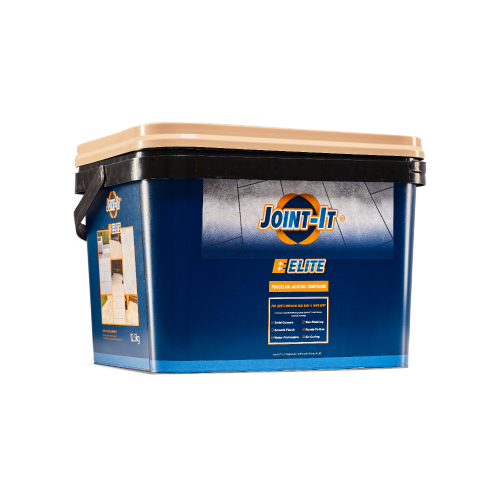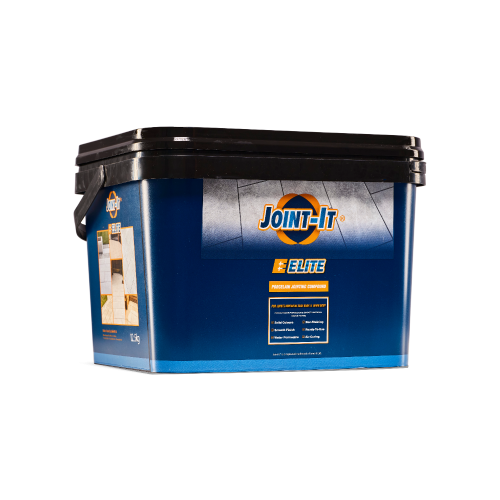Porcelain Grout
Paving grout comes in a variety of finishes, colours, and sizes to perfectly complement your outdoor space.
When installing your garden patio, the final step is filling the gaps between the paving stones—this process is called grouting or jointing.
There are several grout options available, so take a look below to find the best product for your patio. Choose from traditional cement-based grouts or easy-to-use liquid flowable grouts, depending on your needs and preferences.
For any other advice email our experts on sales@discountporcelain.co.uk
Porcelain Paving Grout: Why Choose It Over Resin Brush-In Grout?
When it comes to grout for porcelain paving, you have options — porcelain paving grout and resin brush-in grout are two common choices. Here’s why porcelain paving grout often stands out:
-
Durability: Porcelain grout is tough and built to last. It handles heavy foot and vehicle traffic as well as harsh weather without cracking or breaking down. Resin brush-in grout can be less durable, especially in high-traffic areas.
-
Stability: Porcelain grout provides excellent support, helping keep your pavers firmly in place. Resin grout tends to be less structurally strong and may allow pavers to shift over time.
-
Aesthetics: Porcelain grout creates a clean, smooth, and seamless finish, enhancing the overall look of your paved area. Resin grout often has a more textured, pebbled look, which some prefer for a natural style.
-
Application Flexibility: Porcelain grout works well with both wet and dry installations and suits wider joints. Resin brush-in grout is typically best for narrow joints (up to 6mm) and specific paver types like permeable or interlocking.
-
Maintenance: Porcelain grout is easier to clean and generally needs less upkeep. Resin grout might need more frequent reapplications or repairs.
How to Remove Grout Stains on Porcelain Pavers
If grout stains appear on your porcelain paving, try these methods:
-
Gentle Scrubbing: Use a soft brush with warm water to scrub stains in circular motions.
-
pH-Neutral Cleaners: Apply a cleaner designed for porcelain, let it sit briefly, then scrub and rinse.
-
Grout Haze Remover: For residual grout haze, use a specialized remover following the product instructions.
-
Vinegar or Lemon Solution: Mix equal parts water with vinegar or lemon juice, apply, scrub gently, then rinse (test first).
-
Commercial Grout Stain Removers: These can effectively target tough stains; always follow directions.
Tip: Always test cleaning products on a small hidden spot first to avoid damage.
Can I Use Brick Acid to Clean Grout Stains on Porcelain Slabs?
No. Brick acid (muriatic acid) is very harsh and can permanently damage or etch the surface of porcelain slabs, especially if they are glazed or polished. It can also harm certain grout types.
Instead, use gentle, porcelain-safe cleaning solutions like pH-neutral cleaners or commercial grout stain removers specifically designed for porcelain surfaces.
How Thick Should I Mix Porcelain Paving Grout?
Aim for a smooth, thick paste consistency, similar to peanut butter. Here’s how:
-
Follow the grout manufacturer’s water-to-powder ratio.
-
Gradually add water to the dry mix.
-
Mix thoroughly to a lump-free, smooth paste.
-
Check that it holds shape without running or sagging.
-
Some products require a short rest (slaking) before final mixing — follow instructions.
Always check product-specific guidelines for best results.
Will Pressure Washing Damage Porcelain Paving Grout?
Pressure washing can dislodge or damage grout if used incorrectly. To avoid this:
-
Use moderate pressure and avoid directing the water stream directly into grout joints.
-
Choose a wider spray nozzle (fan or rotary) for even distribution.
-
Keep a safe distance and angle to minimize impact.
-
Test on a small area first.
-
Consider protecting grout joints if needed.
-
Check sealant manufacturer advice if your paving is sealed.
Proper technique is key to protecting grout during cleaning.
Can I Install Outdoor Tile Grout in Direct Sunlight?
It’s best to avoid installing grout in direct sun because:
-
The grout can dry too fast, leading to weak adhesion, cracks, or shrinkage.
-
It’s harder to work with quickly drying grout, resulting in uneven joints.
-
The workable time for application is reduced.
Tips for best results:
-
Work during cooler parts of the day (early morning or late afternoon).
-
Use shade structures like canopies or umbrellas if necessary.
-
Keep materials cool before use.
-
Lightly mist the surface if drying is too rapid.
Always follow your grout manufacturer’s guidelines.




